Fighting COVID-19
Critical Legal and Policy Analysis Advance Solutions
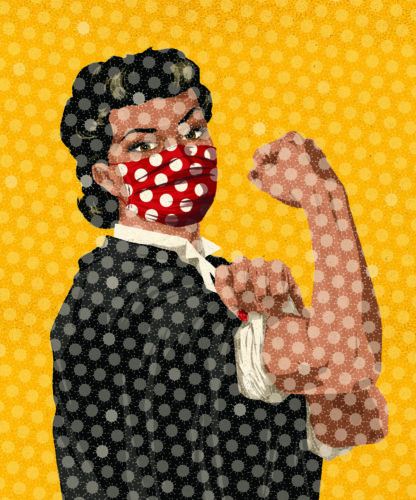
On December 31, 2019, the World Health Organization received notification from Chinese officials about a new pneumonia diagnosed in Wuhan City, Hubei Province. By January 23, Wuhan and surrounding areas were locked down, a move described by WHO officials as “unprecedented in public health history.” • But 2020 would prove to be a year of many unprecedented public health measures, as a novel coronavirus traveled the world on countless respiratory droplets, triggering the COVID-19 global pandemic. And while the disease was stopped in its tracks in some countries—notably Taiwan, New Zealand, and Singapore—it found a ready host in the United States, where political discord collided with scientific facts, and today the U.S. stands out among its peer nations for posting the highest number of fatalities and infections. • “We started out way behind the eight ball because of the testing fiasco. From that point on, it should have been all hands on deck, with everyone pulling together to make up for lost time. Instead, the federal government has abandoned leadership and even turned simple mitigation efforts, like face masks, into political statements,” says Michelle Mello (BA ’93), professor of law and professor of medicine. •Mello and her frequent co-author and research collaborator David Studdert, also a professor of law and professor of medicine, are two of Stanford Law School’s health law scholars who have been working flat out since the start of the pandemic, publishing at a feverish pace on critical topics from stay-at-home orders to the limits of federal authority and states’ rights—answering the call for essential analysis at the heart of health and law—and offering a way forward. • Much like the developing treatments and vaccines, medical journals have accelerated their pace to publish COVID-related research, with JAMA, the New England Journal of Medicine, and others racing to get their currency to practitioners and policymakers on the front line.
“Many of us involved in population health have heard the call and been devoting enormous amounts of time and energy to this. In a sense, it is our moment,” says Studdert. “And there’s been a pressing need to have a range of legal concepts and policy concepts explained to the community, ideas that Michelle and I have devoted our careers to.”
As the world marks one year of this historic pandemic, COVID-19 cases are at an all-time high, with the latest surge in the United States prompting a pronouncement from Director of the CDC Robert Redfield that Americans
are facing “the most difficult time in the public health history of this nation.” With nearly 17 million cases logged, more than 300,000 deaths, and countless lives upended—we look at 2020 through the lens of health policy officials on the ground in Santa Clara County, California, and hear from Stanford Law School health law experts who share insights into the government’s response and offer hope that science—and unbiased scholarly research—can help curtail the rising toll of COVID-19.
Santa Clara County: Ground Zero for a Pandemic
Santa Clara County is headquarters for much of Silicon Valley’s tech giants and startups—a place where people from around the globe come together for the area’s unique brand of innovation.
As director for the Public Health Department in Santa Clara County, Dr. Sara Cody remembers when early reports of a new virus in China started to filter through. But it wasn’t until mid-January that she knew trouble was brewing.
“All of a sudden there was a glut of information coming in and a glut of people needing information about this new illness,” says Cody, (BA ’85). “We were getting lots of inquiries and communications from local physicians with questions, asking what we knew and what we were doing about this new virus. Which is really typical—it starts as communication.”
The county became one of the first known hotspots for COVID-19, with two of the nation’s first six diagnosed cases and the first death.
On January 23, Santa Clara set up an incident command center to manage the quickly increasing communication flow, and on February 3, Cody declared a local health emergency—the first county in California to do so. But those efforts were hampered by the early failure and subsequent delays of the CDC tests, which left Cody and her team flying blind.
“The only way you could get testing was by sending a specimen to the CDC in Atlanta. And there were strict limitations—we could only test someone who was in the hospital who also had a connection to Wuhan,” explains James R. Williams, JD ’10, county counsel for Santa Clara County. “We knew the virus was spreading, but we couldn’t see the full extent of the spread. We knew there had to be a lot more cases, given how limited testing was. We also knew that viruses like this have exponential growth curves.”
On March 9, Santa Clara County again led the country, this time becoming the first jurisdiction to issue an enforceable health order banning large gatherings. Williams recalls the quickly escalating crisis as the county pushed the legal envelope with ever tightening restrictions.
“It was a very difficult decision to then go to banning gatherings of over 100 people,” says Williams. “And then, of course, issuing the shelter-in-place mandate was even more so. But these decisions were based on what we were seeing. All of a sudden, we had a bunch of community transmission. People were getting the virus who had no connection to Wuhan, people who had not traveled anywhere.”
Quick action was needed, and Cody was ready. She coordinated the response for the Bay Area’s six counties,
hashing out details with her counterparts in San Francisco, San Mateo, Marin, Contra Costa and Alameda Counties for the country’s first shelter-in-place regulations. Williams led the effort to draft the legal orders, the strictest measures yet in the U.S., covering approximately 6.7 million residents.
“It was totally unprecedented,” says Williams, of the March 17 orders. “We traditionally would issue isolation and quarantine orders that really were specific to certain individuals, or certain households, or certain businesses—with a hazardous waste area, or some resurgence of measles. This was something so much broader in scale. So even though we’re familiar with the specific tools of closing down a facility, or doing a quarantine, the scale of this order was absolutely unprecedented. And the legal issues were myriad.”
The magnitude of what they were about to impose on the Bay Area’s residents weighed on the team.
“It’s a huge, huge burden on society for things to be closed,” says Williams. “So with the first shelter-in-place order, one of the things we had to figure out was how to make sure that we were keeping open essential services that people needed to survive. Grocery stores and hospitals, obviously, and central governmental services. But what is that list?”
They knew they were in uncharted territory. “We couldn’t look to see what some other city or state had done and pull from their list. We didn’t have time to do some big consultation or analysis with dozens of people. We just had to get it done,” he says.
That Williams and Cody work as a tight team made Santa Clara County’s rapid response possible.
“Usually an attorney might sort of say ‘I’m just here to manage the risk and tell you what you can’t do,’” says Cody. Williams has a very different perspective, she explains. “He and his team want to know ‘What’s the right thing and what do we need to do? And we’ll help manage the risk to do it.’ Their top-level concern is our top concern in public health.”
That relationship with legal thought leaders extends, Cody adds, to Stanford and the Bay Area’s academic community.
“One facet of this story is that the connection between local and state government and academia is quite important,” she says. “I know both Michelle and David quite well. I read their work, and informally, I do tap them from time to time. How fabulous is it that we have two of the most talented health law attorneys right in the county at Stanford where we can pick their brains.”
“The scale of this order was absolutely unprecedented. And the legal issues were myriad.”
James Williams, JD ’10, County Counsel for Santa Clara County
Battling the Virus, and Its Politicization
For David Studdert, the fight against COVID-19 is akin to war. “It’s unprecedented, at least in most of our lifetimes. I think some of the WWII wartime measures in Europe might be comparable,” he says.
The war analogy extends to public resistance to mitigation measures implemented by health and government officials—resistance that’s woven into the fabric of the American federal system.
“These questions about the state’s authority to restrict individual freedoms are really at the heart of public health law,” says Studdert. “It’s always the same battle at the hard edge of public health—the state’s moral and legal authority to intervene to protect the general population, clashing with the rights of individuals to be free from interference.”
In this instance, Studdert says, the U.S. federal government took a uniquely laissez-faire approach to the pandemic.
“The degree to which the federal government has taken control of the situation in the United States is very different to most other rich countries in Western Europe and Australia and New Zealand and Canada, where central governments have been much more actively involved in controlling the pandemic and setting the tone for public health orders,” he says. “Here, virtually all of that has been left to the states, counties, and cities. It has led to a patchwork response that is inadequate—undercutting our ability to deal with the catastrophe while also fueling doubts about the legitimacy of what local governments are trying to do.”
That tension has raised critical legal questions, such as what authorizes government officials to shut down businesses and keep people at home? What authority do state governors have to restrict movement between states and into their state? When should the Defense Production Act be used?
“Often those questions don’t have clear answers in public health law. But what we have is a framework for approaching them and a set of principles courts can work through in evaluating the merits of challenges to public health orders,” says Studdert.
The federal government’s failure to lead in the fight against the virus created a stark choice for states and counties.
“The policy choice became between keeping the economy open and protecting people from COVID. But we were only in that situation because we blew it in the early days,” says Mello. “The reason that the virus took root here is because we never fixed that testing problem, and there was no national effort to develop a comprehensive framework that put in place orders so that we could dial up and dial down uniformly in a way that corresponds to the level of threat.”

Stanford Law School Professors David Studdert and Michelle Mello at Crown Law Library—before the pandemic
Legal Framework and Structure
Mello references an earlier American tragedy as the impetus to develop law that aided policymakers during the pandemic crisis.
“When September 11 happened and people got very worried about anthrax and bioterrorism, a lot of people realized that we didn’t have the laws on the books that would permit us to prevent a future attack. At the same time, laws we did have were antiquated, without due process protections, and people’s liberties were going to be compromised unnecessarily. So there was an enormous modernization effort for public health law that followed in the decade after,” says Mello. “So at this point the legal framework is actually quite good. But you know, the law’s only really helpful if wise people use it wisely. And that just hasn’t been the case everywhere.”
But wisdom can be hard to find when simple tools like face masks are politicized. Here, Mello says communication is more important than an across-the-board mandate, which she doesn’t think would survive a court challenge.
“I’m not aware of an authority that would undergird that kind of a federal mandate. It would have to be tied to interstate commerce and that’s a pretty hard case to make for every man, woman, and child walking around their neighborhood in the United States,” she says.
With the unique federal structure of the United States, the key to success is incentives, not necessarily mandates. “You can’t commandeer the states. If there’s anything we learned from the Affordable Care Act litigation, it’s that. But you can incentivize them. You can provide all kinds of financial incentives up to a certain magnitude to get them to do things. And you can convene them and provide political cover and all kinds of other things,” says Mello.
As it turns out, California’s organizational structure was crucial to avoiding some of the political pitfalls and helping its counties respond quickly to the pandemic.
“The person, by state law, vested at the county level with health decision-making authority is the local health officer. In our case, that is Dr. Sara Cody. And she is not an elected official. She’s a doctor. In fact, she has to be a doctor by state law,” says Williams.
Williams considers it “an awesome authority” designed to prevent the kind of political infighting that has been on display at the federal level and in many states—where politicians have become the public face of the pandemic fight and, too often, local health officials ignored, or
worse, vilified.
“These questions about the state's authority to restrict individual freedoms are at the heart of public health law.”
Stanford Law Professor David Studdert
America’s Weakened Public Health Infrastructure
The Trump administration’s efforts to push responsibility for the pandemic to the states was, say Mello and Studdert, disingenuous considering the dismal state of public health infrastructure across the U.S.
“Everybody in public health would say that the system has been gradually defunded over the last 20 years to the point of starvation,” says Mello. “It can barely accomplish its goals in normal times. And then when there’s a pandemic, there’s just an enormous strain on the system and that’s why we have emergency laws—so the government can throw a lot more resources at it. But you can only scale up so quickly.”
From testing to contact tracing, essential public health tools simply weren’t available to meet the huge uptick in demand. “The states and counties just don’t have the resources in place to handle testing and contact tracing of this magnitude. They just couldn’t do it,” says Mello. “And for the federal government to just throw the responsibility back on them without adequately resourcing them was a complete abdication of responsibility.”
As the virus continues to surge into winter, Williams is very concerned about the county’s ability to respond.
“The mission of the counties in California is to be the safety net service provider. We run a large hospital system, we run the social services, and as you can imagine, this is a time that’s placing greater strain on those same services. And so, funding is absolutely vital. And the only entity that can literally print money is the federal government,” he says. “We have very, very few tools to raise revenue. We have very few tools to cut costs because of the demands that are being placed on us right now. And that’s largely true at the state level too. So the federal government in a time of disaster has always historically stepped in and has provided that backstop. This is because the federal government actually has those tools in a way that states and local governments just don’t. We need that to come back right away.”
In the near term, Mello recommends that the federal government commit to rebuilding what’s been dismantled.
“I think a successful outcome would be that we have somebody in the White House who at least reinstates the infrastructure of command, who puts back together a standing group to deal with pandemic response and reinstates authority of the key agencies,” she says.
Still, the polarization of the pandemic response across the nation, and early missteps by the CDC in virus testing, remain serious concerns as the nation starts to roll out the new vaccine.
“At this point the legal framework is actually quite good, but the law's only really helpful if wise people use it wisely.”
Stanford Law Professor Michelle Mello
The Promise of a Vaccine, But Not Fast Enough
Mello has been studying the politics of vaccines for a decade, and she is very clear that the path to success for a COVID-19 vaccine depends on trusted messengers encouraging vaccination.
“Pharmaceutical companies need to sit this one out—they can’t offer any commentary on vaccination policy,” she cautions. “There is a very strong anti-vax movement in the U.S., and one of their chief ways of thinking is that there is a conspiracy by big industry to make money off of vaccines, and so you can’t trust vaccines. Whenever I publish something on vaccination policy, immediately the Twittersphere lights up with ‘Oh, she’s on the take from the pharma industry,’ ‘She’s paid by drug companies.’ I’ve never taken money from drug companies, but it is just immediately where they go.”
Key to getting it right is rebuilding trust in America’s health agencies. “I think it’s absolutely critical for the long term viability of public health,” says Studdert. “Those agencies have to be able to vouch for the efficacy of disease control measures and be believed, and vouch for the safety and efficacy of vaccines and be believed. But that trust just isn’t there right now for many people. So let’s use third-party intermediaries to regain public confidence. Athletes, movie stars, the Stanford Tree, whatever it takes. As for the drug companies, they need to be completely transparent about their testing information, and then stand back and let policy happen.”
As the logistics guiding distribution of the vaccine get worked out—with both Mello and Studdert agreeing that special attention must be paid to underprivileged communities in the U.S. and abroad—they caution against easing mitigation efforts. “I’m very hopeful that we’ll soon be able to look back at COVID-19 vaccines as a story of immense scientific innovation and speed in a time of crisis. But the less glamorous parts of the vaccine story—glass vials, Arctic-temperature freezers, maintaining public trust in how limited supplies are distributed—will get written too. And if we don’t get those things right, the vaccines won’t deliver on their promise. The federal government has another chance to step up to the plate here,” Studdert says.
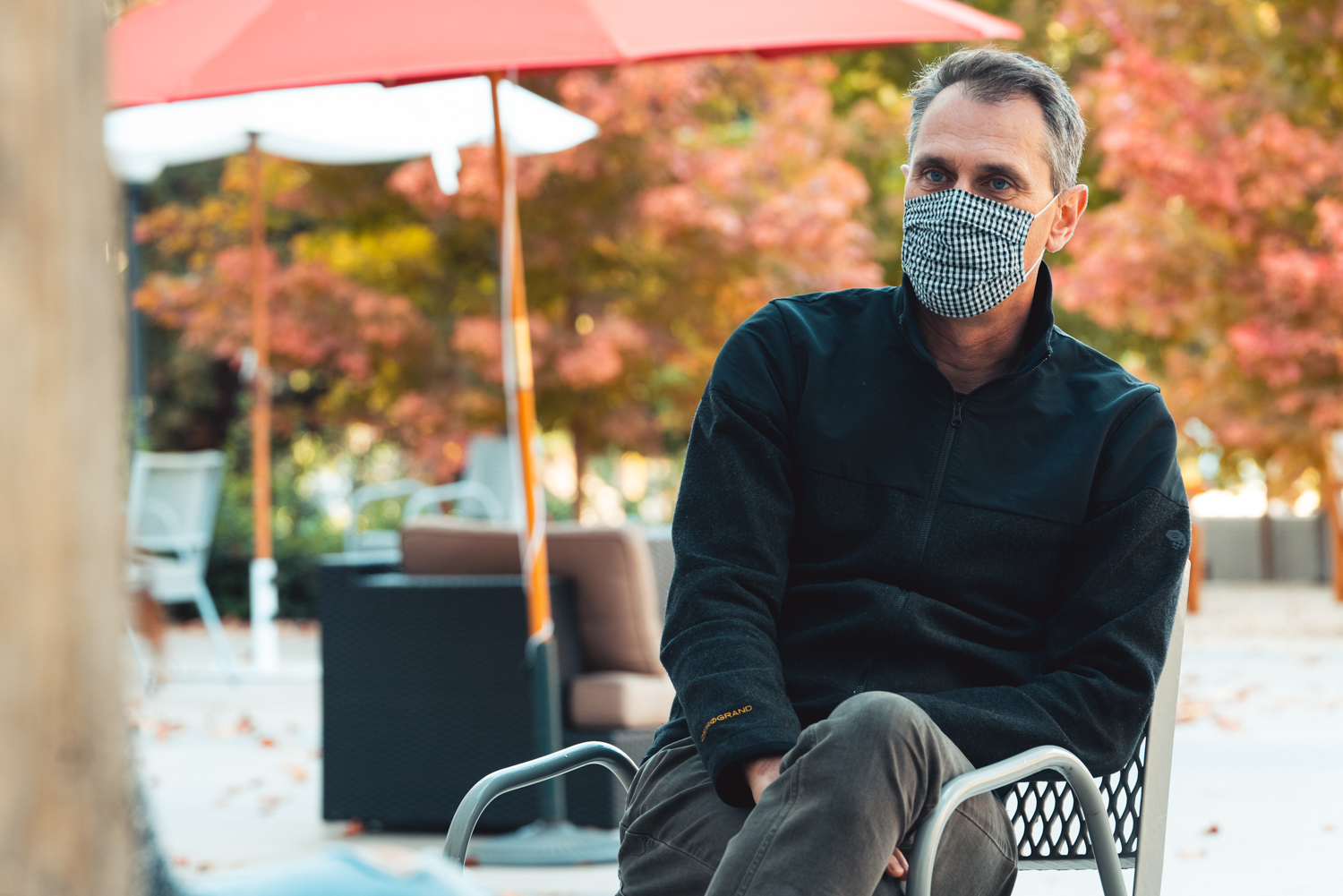 |
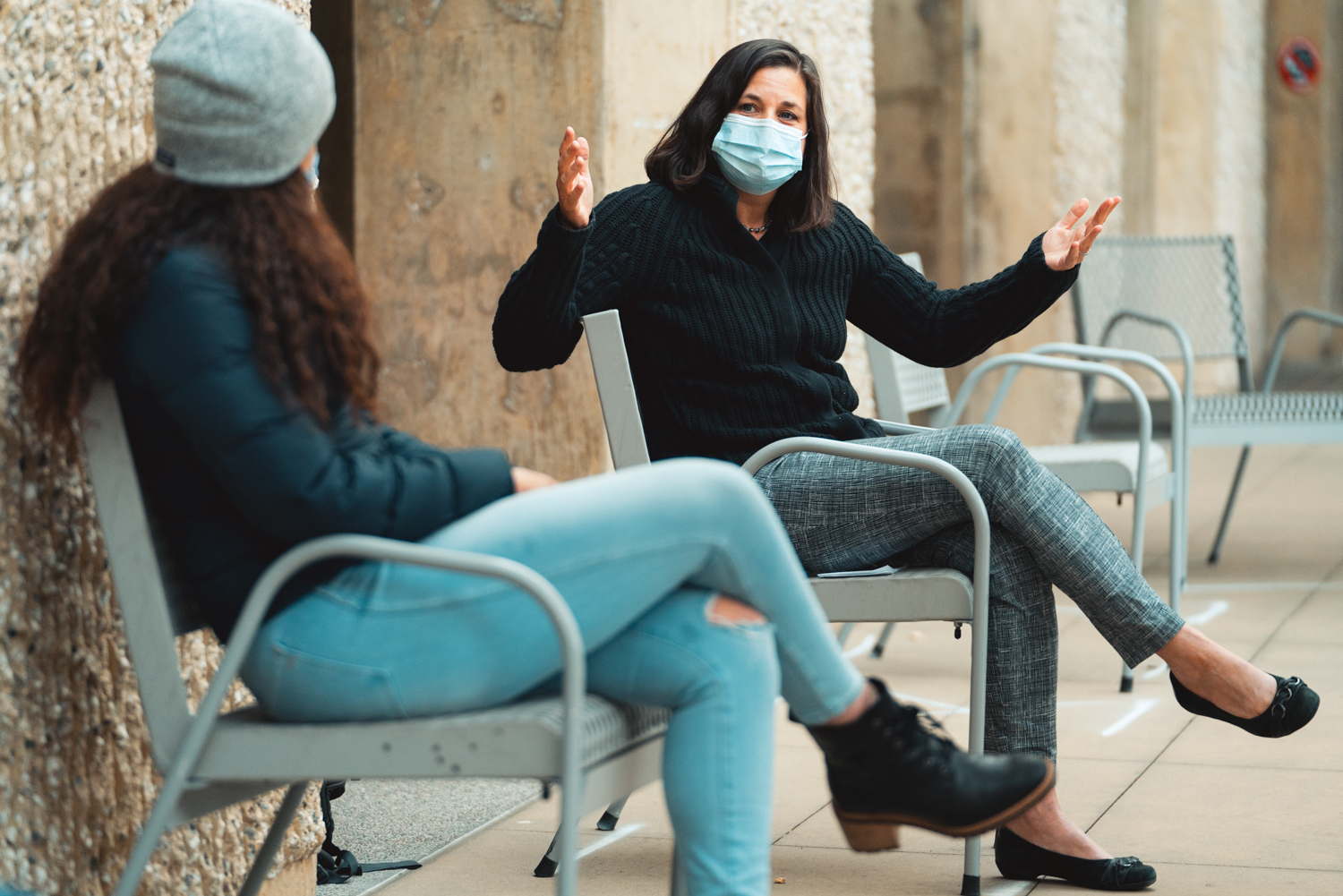 |
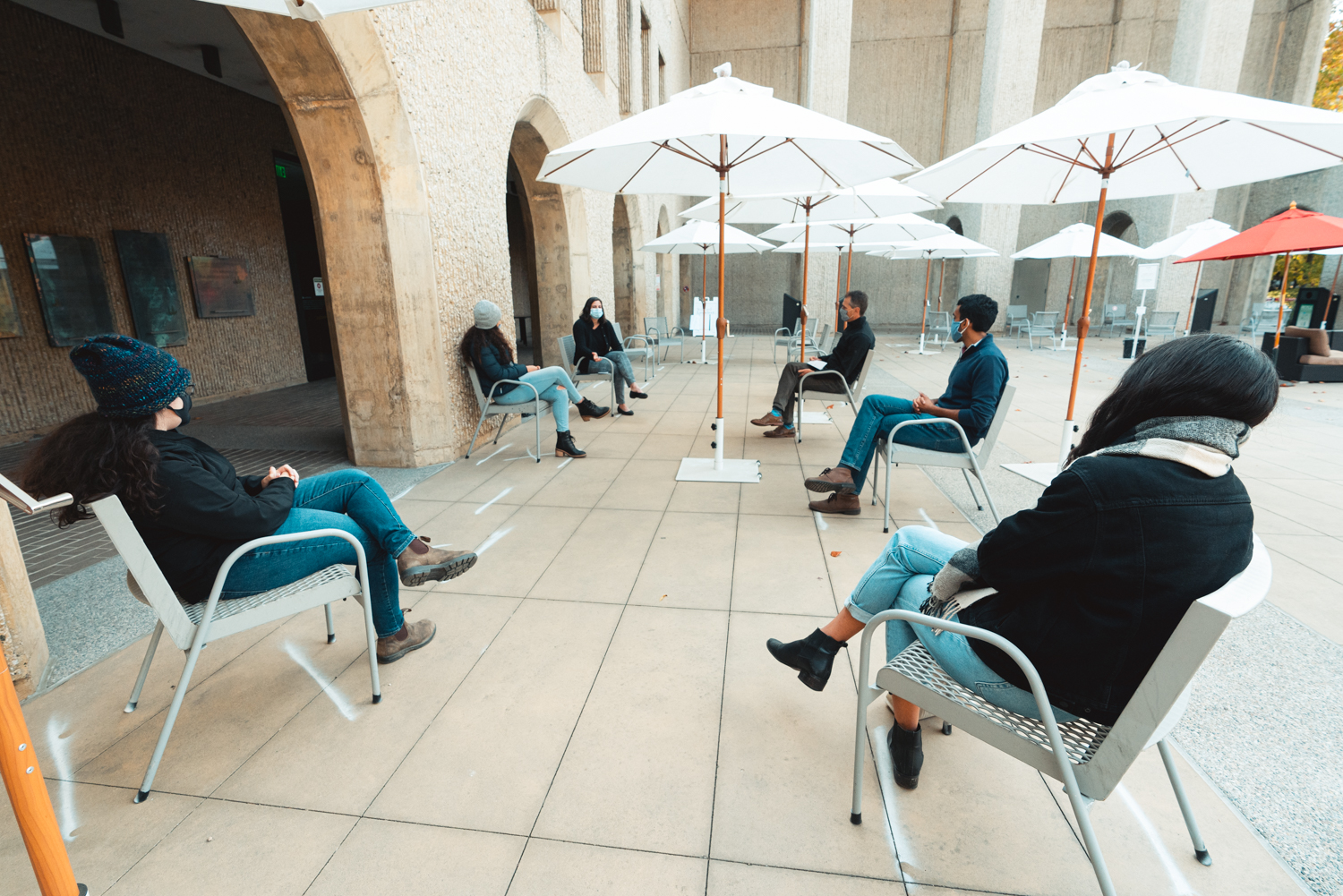 |
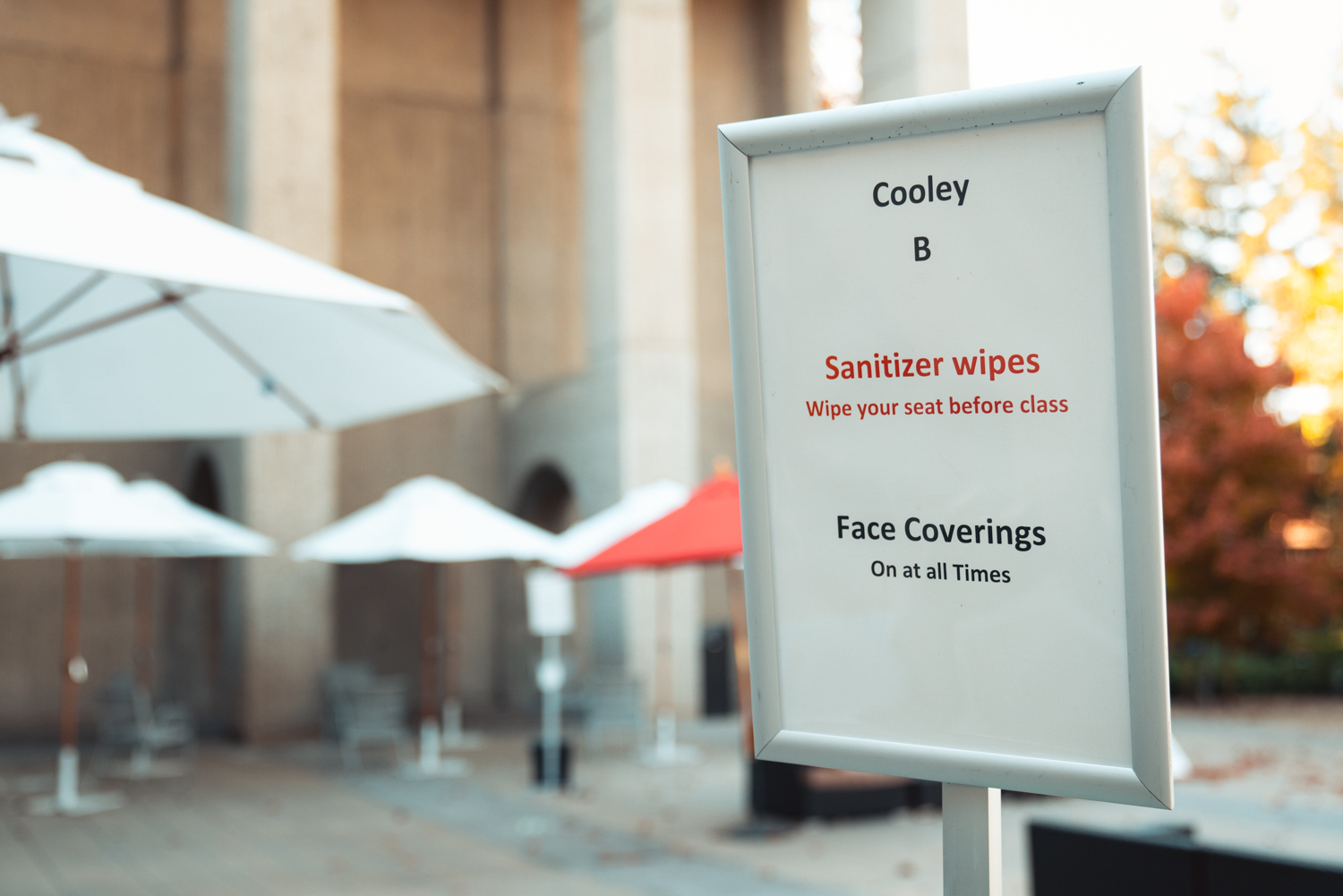 |
|
Professor David Studdert (top left) and Professor Michelle Mello (top right) teaching at Stanford Law School during the fall 2020 quarter with in-person courses held outside amid COVID-19 restrictions (photos by Andrew Brodhead) |
|
Some have raised questions about mandating the vaccine, but both scholars don’t see this on the horizon.
“There’s no appetite for mandatory vaccination, and I don’t think that’s how it should be done. On the other hand, we have long conditioned certain privileges on vaccination,” says Studdert. “We don’t let kids go to government schools unless they’ve got their vaccination certificates, and I can envision a similar thing happening with returns to work in 2021.”
For a current research project, Studdert asked a diverse group of 1500 members of the general public how receptive they would be to a scheme that permitted them to have COVID-19 restrictions relaxed if they showed proof of positive antibodies from prior infection or vaccination. “Support was pretty evenly divided, but not along the lines you might expect. Conservatives and progressives didn’t differ in their level of support, nor did whites and minorities,” Studdert says, noting, however, that some scholars and public health officials have criticized the idea because it might unduly disadvantage people of color. “Certainly these kinds of schemes have a very unhappy history. Fitness certification has often been code for racism and invidious discrimination. But if it were done right, there’s an opportunity here to give something back to the store clerks and the bus drivers—the very people who bore the brunt of the pandemic”
Looking ahead, Mello and Studdert have reason to feel optimistic. For her part, Mello believes some changes in behavior—including forgoing handshakes and improving handwashing—will become permanent. These changes have “public health consequences, even just in a normal flu season,” she says. And, like most working parents, she hopes that remote flexible work is here to stay, as well as reduced in-person conference attendance and Zoom.
Studdert, meanwhile, is buoyed by the progress in the health law field. Just as the Affordable Care Act, passed in 2010 as the first serious attempt to extend health care coverage in the United States since the advent of Medicare, inspired a generation to pursue careers in health law, he predicts the COVID-19 crisis will do the same. “I expect lots of bright minds to pour in—not just to health law, but also health economics and decision science, and to medicine, epidemiology and biostatistics. I recently overheard my teenage daughter bragging to her friends about what her dad does—strange days indeed.”
And both Studdert and Mello have seen research and publication in their field skyrocket since March.
“There’s been an explosion of innovation, both in the academic sector and private sector. It’s really unprecedented, the amount of good science that has gone on,” says Mello. “Over 77,000 articles on COVID have been published in peer-reviewed medical journals this year. That’s incredible. Hopefully more innovations with testing,
therapies, and the vaccine will follow.”
Meanwhile, Dr. Cody emphasizes that relationships between policymakers and health law academics need to be nurtured. “The fabric of these relationships has to be built over time. And in a crisis like this, they turn out to be very important,” she says. SL

